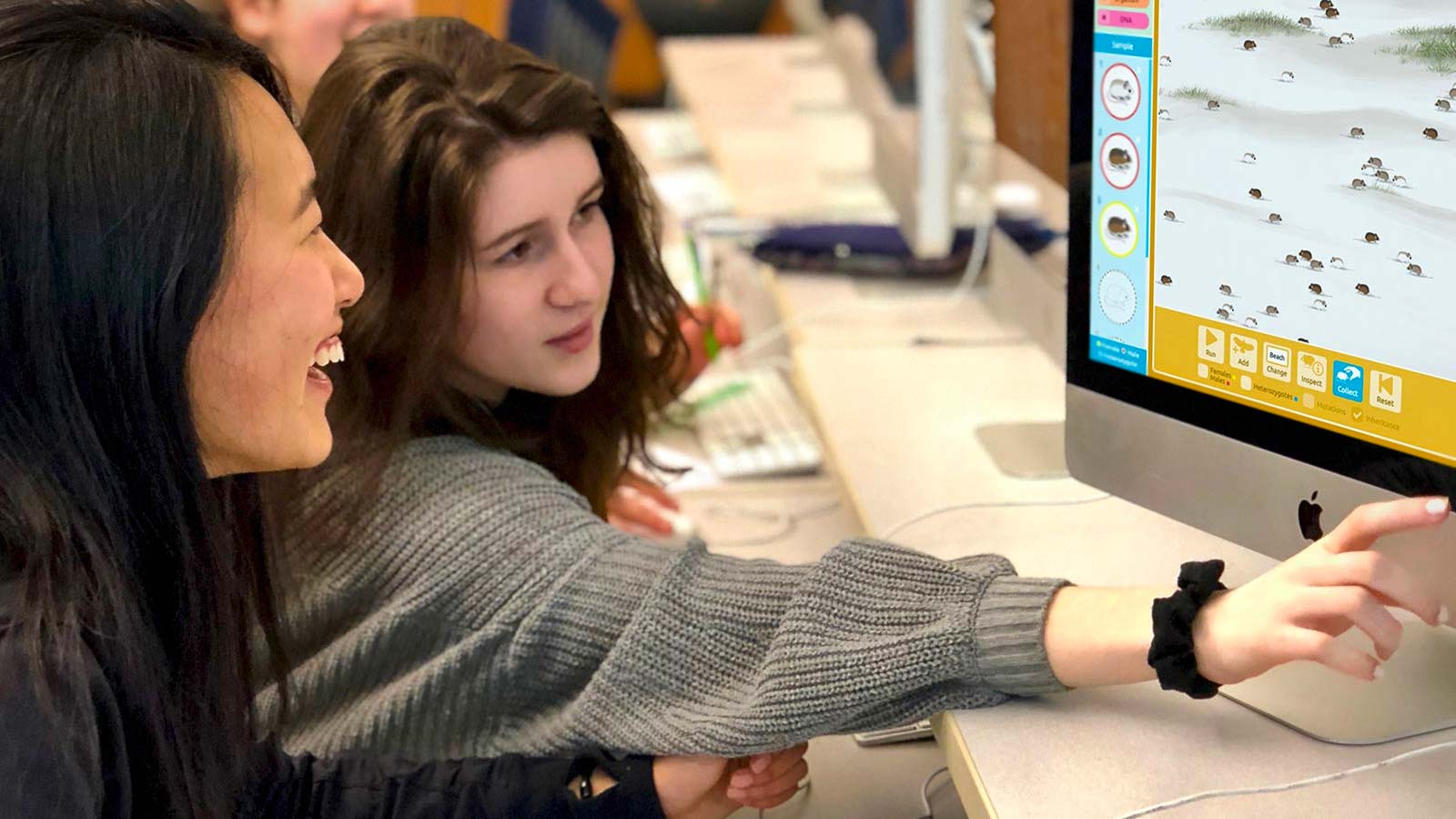On May 10, 2025, the National Science Foundation (NSF) celebrates 75 years of empowering discovery, innovation, and learning. For generations, NSF has supported the ideas and people that have shaped STEM education, research, and opportunity in America.
But this milestone is more than a celebration—it’s also a moment for reflection. The gains we’ve made through NSF investment are not guaranteed. And the future of that support now faces real uncertainty.
“The impacts from NSF investment in educational technology research and development have been profound,” says Chad Dorsey, president and CEO of the Concord Consortium. “We’re proud to have been a part of that story for the past 30 years—and we’re deeply aware of how much could be lost if that support wavers.”

Powered by NSF: How innovation in STEM education comes to life
At the Concord Consortium, we’ve been able to pioneer transformative learning experiences because of NSF’s steadfast support. These innovations bring complex science concepts to life for millions of learners.
- Middle and high school students interact with atomic-scale phenomena in our award-winning Molecular Workbench, which is built on sophisticated computational methods based on first principles.
- Secondary students design green buildings with easy-to-use CAD software, powered by computational physics and artificial intelligence.
- Elementary students explore matter and phase changes with interactive apps built on particle-level models.
- Students model hurricanes, wildfires, and inland floods; interact with 3D simulations of plate tectonics; explore hereditary traits with digital dragons; and collaborate on simulated electronic circuits across devices.
Without NSF, none of these tools would exist. And without continued investment, we risk stagnating just when students need innovation the most.
Inquiry and agency: Putting students in the scientist’s seat
NSF’s support has helped us reimagine the role of students—from passive learners to active investigators. We have developed and researched next-generation curriculum and technology.
- Students conduct real experiments in biology, chemistry, and physics classrooms using digital tools that mirror professional science practices.
- Young learners engage in creative engineering challenges, combining mechanical and electronic components with papercraft design.
- Middle and high school students design complex system models and test their own ideas without the need to write equations or computer code.
These activities empower students to build 21st-century skills in computational thinking, problem solving, and systems thinking.
Building a data-literate generation
In a world shaped by data, NSF has invested in tools that help students not only understand data—but use it to solve real problems.
- CODAP, our web-based, open-source data platform, immerses students from grades 5 to college in authentic data analysis.
- Students reason about noise and variability, make predictions, and even become data producers—designing investigations and drawing conclusions.
This kind of data fluency is essential—not only for future scientists, but for an informed, empowered citizenry.
Supporting the teachers who make innovation possible
Teachers are central to making STEM learning meaningful. NSF has made long-term investments in professional development and teacher support.
- Concord Consortium developed an e-learning model that defined best practices for online learning from one of the first virtual teacher PD programs.
- Our authoring tools let teachers customize content and tailor learning to their students’ needs.
- We designed dashboards of student learning to help develop teachers facilitate productive disciplinary engagement in their classrooms.
Professional development supports lifelong learning and sustains a STEM workforce pipeline by improving teachers’ STEM knowledge and STEM teaching practices.
Open access for all
Because of NSF’s support, all our tools—from simulations to full curricula and teacher resources—are available free of charge under open-source and open-access licenses. That means any school, anywhere, can bring cutting-edge STEM learning into their classrooms.
“Teachers benefit by getting classroom-ready, evidence-based curriculum,” says Leslie Bondaryk, Chief Technology Officer at the Concord Consortium, “and students benefit from engaging, explorable learning experiences that make science real.”
Bondaryk notes, “Through partnerships with publishers and software developers, our work has paved the way for many of today’s most successful educational products. Our technology solutions are inspiring large-scale improvements across the educational ecosystem.”
Celebrate the legacy. Protect the future.
NSF turns 75 this year. Let’s honor this incredible legacy with action because if we want the next 75 years to be as transformative as the last, we must ensure NSF continues to thrive.
Here’s how you can help:
- Explore NSF-funded projects linked in this post and see their impact firsthand.
- Share your stories on social media using #NSF_75, #SupportNSF, and #SaveNSF
- Talk to your community and your representatives about why NSF funding matters.
The story of STEM education in America is inseparable from the story of NSF. The breakthroughs we celebrate today—and the future we hope for—depend on strong, sustained investment in science and education.
One thought on “75 years of discovery, innovation, and impact: Why we must celebrate and safeguard the NSF”
Comments are closed.
Very concerned with the cuts in funding. It seems very dangerous, a total lack of thought, and Leadership.